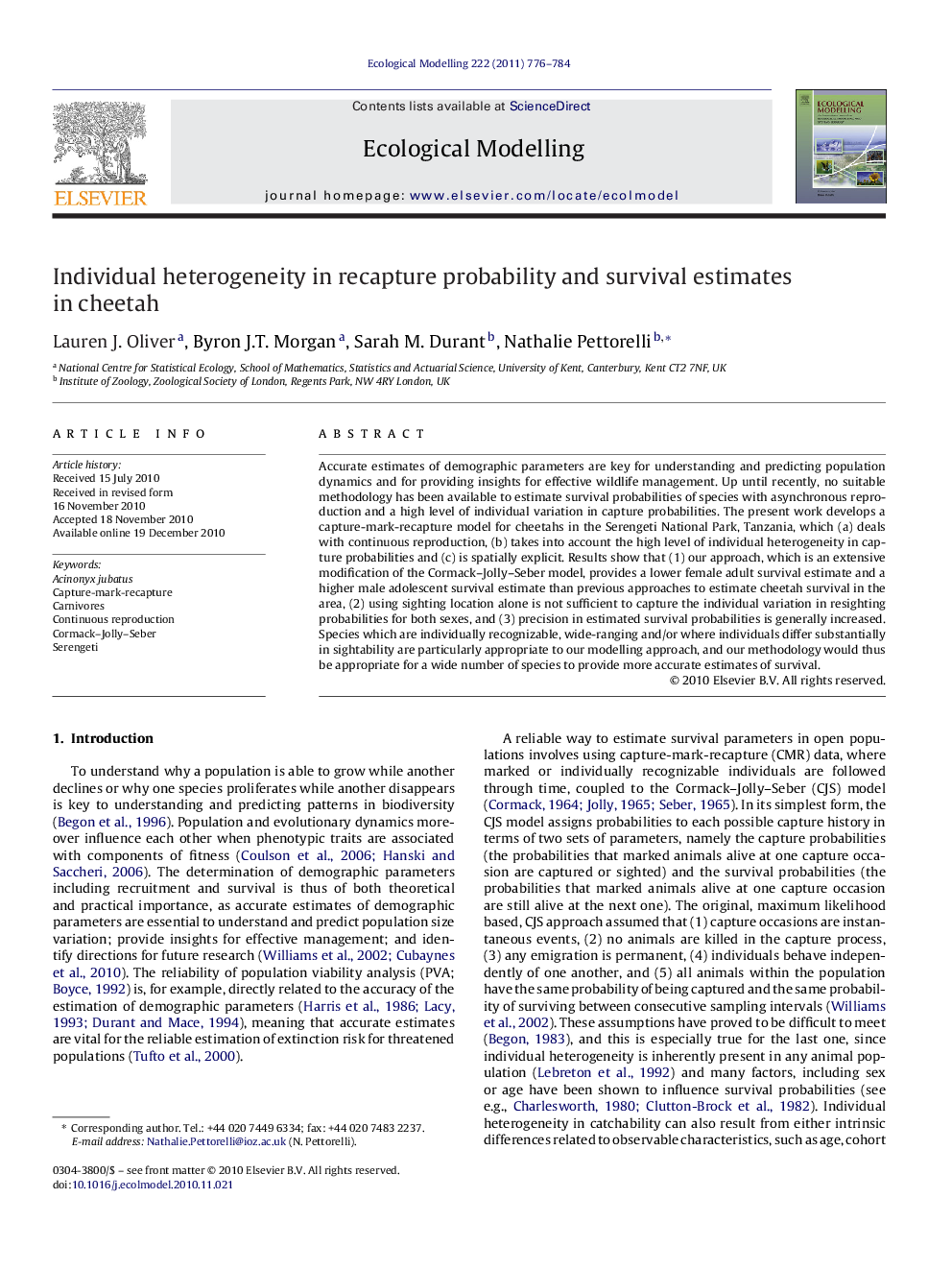| Article ID | Journal | Published Year | Pages | File Type |
|---|---|---|---|---|
| 4377023 | Ecological Modelling | 2011 | 9 Pages |
Accurate estimates of demographic parameters are key for understanding and predicting population dynamics and for providing insights for effective wildlife management. Up until recently, no suitable methodology has been available to estimate survival probabilities of species with asynchronous reproduction and a high level of individual variation in capture probabilities. The present work develops a capture-mark-recapture model for cheetahs in the Serengeti National Park, Tanzania, which (a) deals with continuous reproduction, (b) takes into account the high level of individual heterogeneity in capture probabilities and (c) is spatially explicit. Results show that (1) our approach, which is an extensive modification of the Cormack–Jolly–Seber model, provides a lower female adult survival estimate and a higher male adolescent survival estimate than previous approaches to estimate cheetah survival in the area, (2) using sighting location alone is not sufficient to capture the individual variation in resighting probabilities for both sexes, and (3) precision in estimated survival probabilities is generally increased. Species which are individually recognizable, wide-ranging and/or where individuals differ substantially in sightability are particularly appropriate to our modelling approach, and our methodology would thus be appropriate for a wide number of species to provide more accurate estimates of survival.
